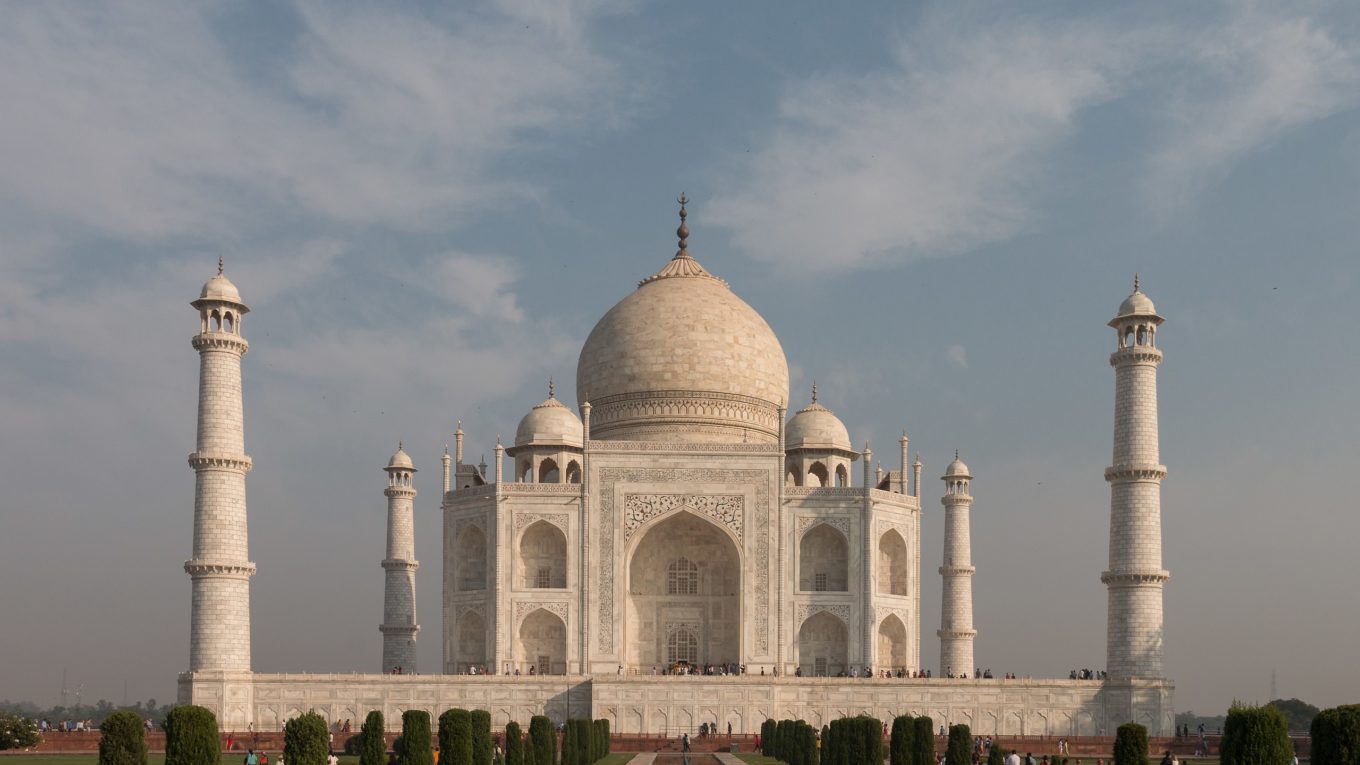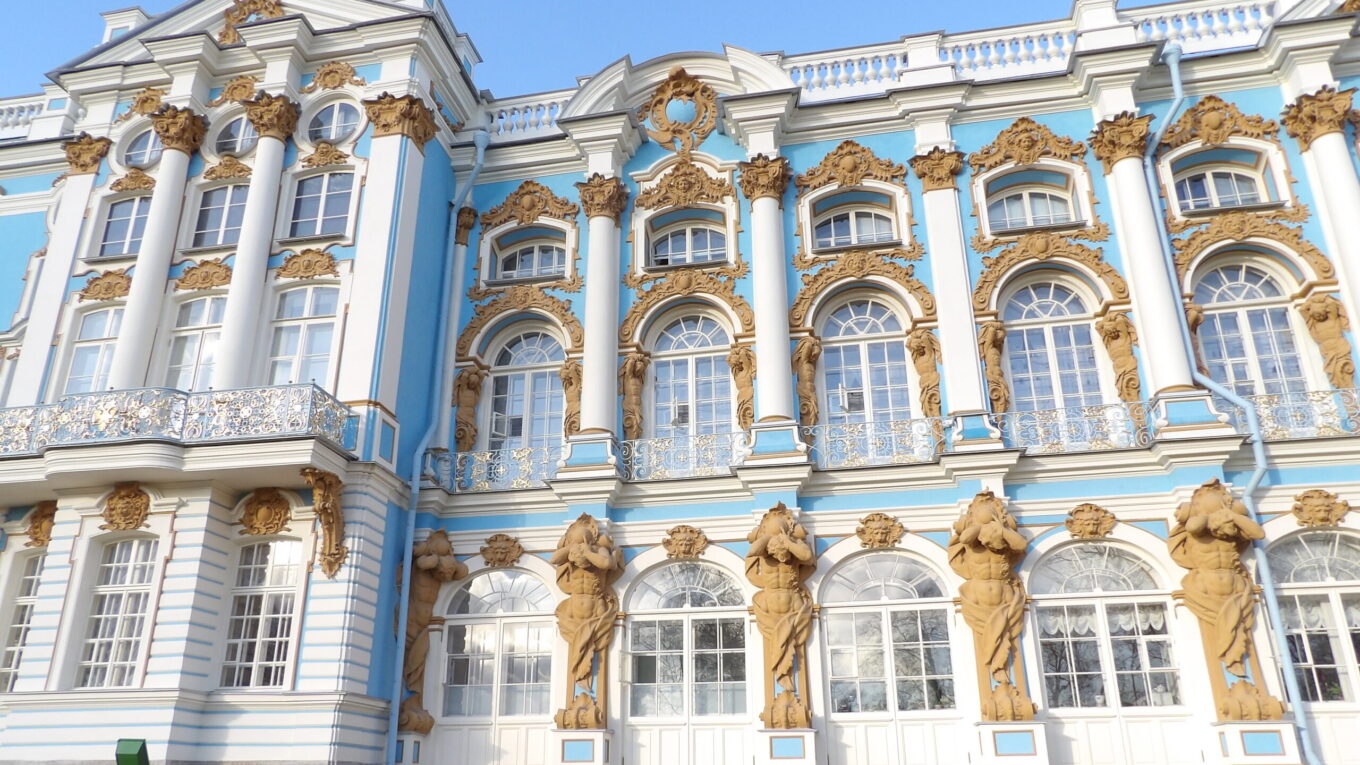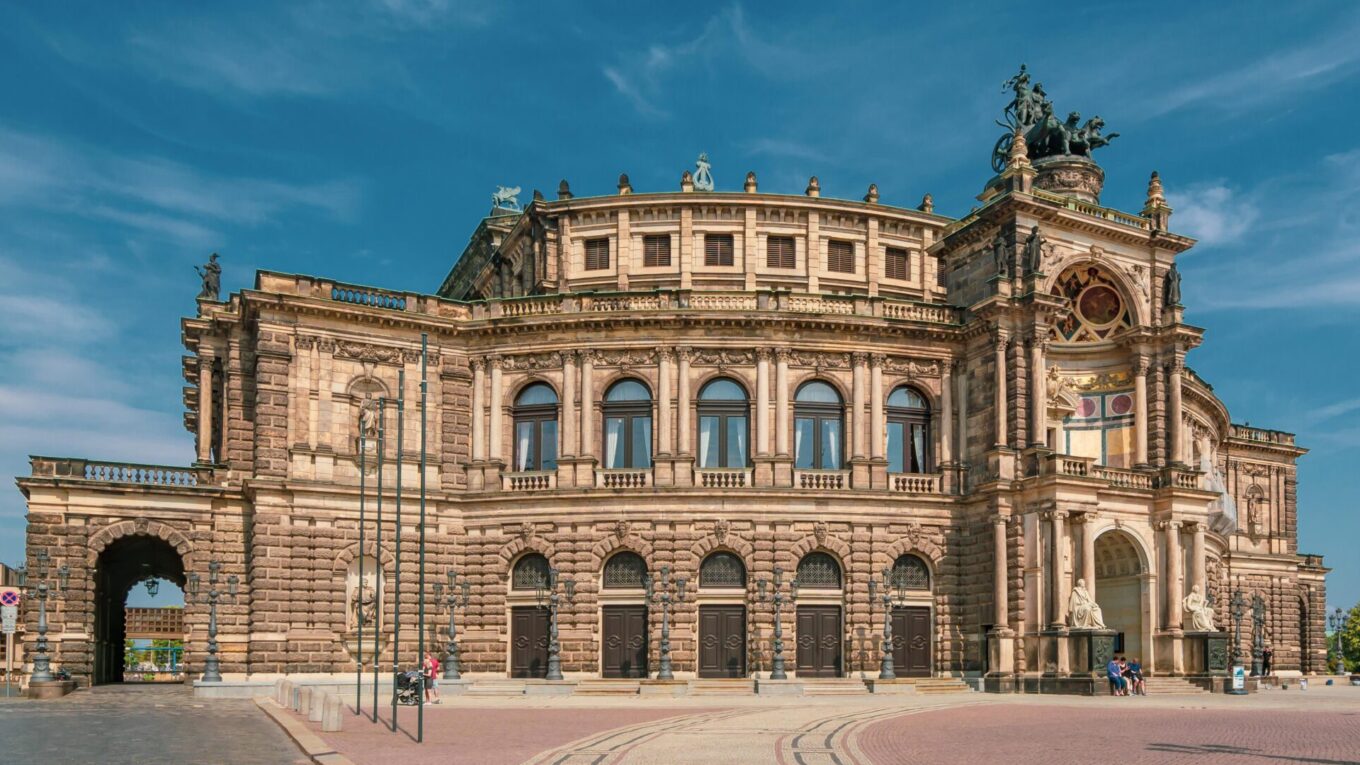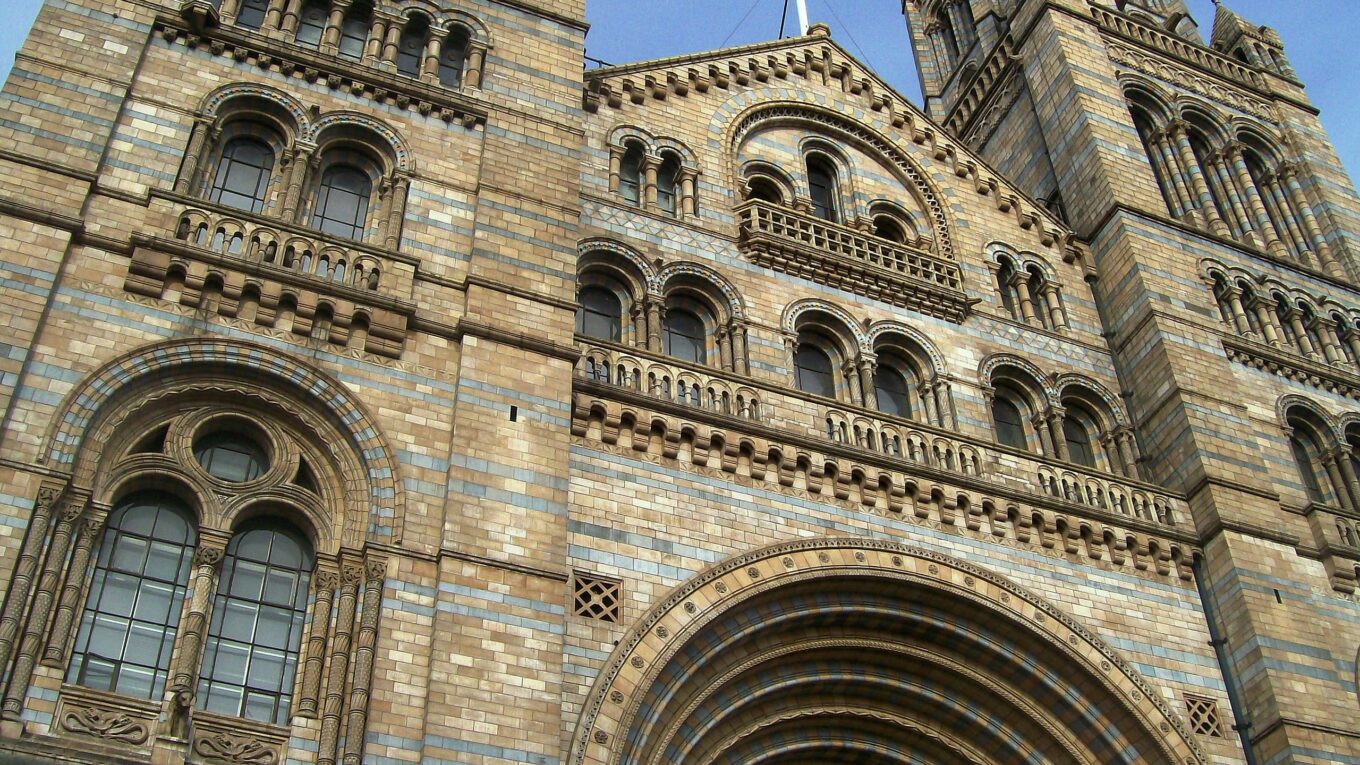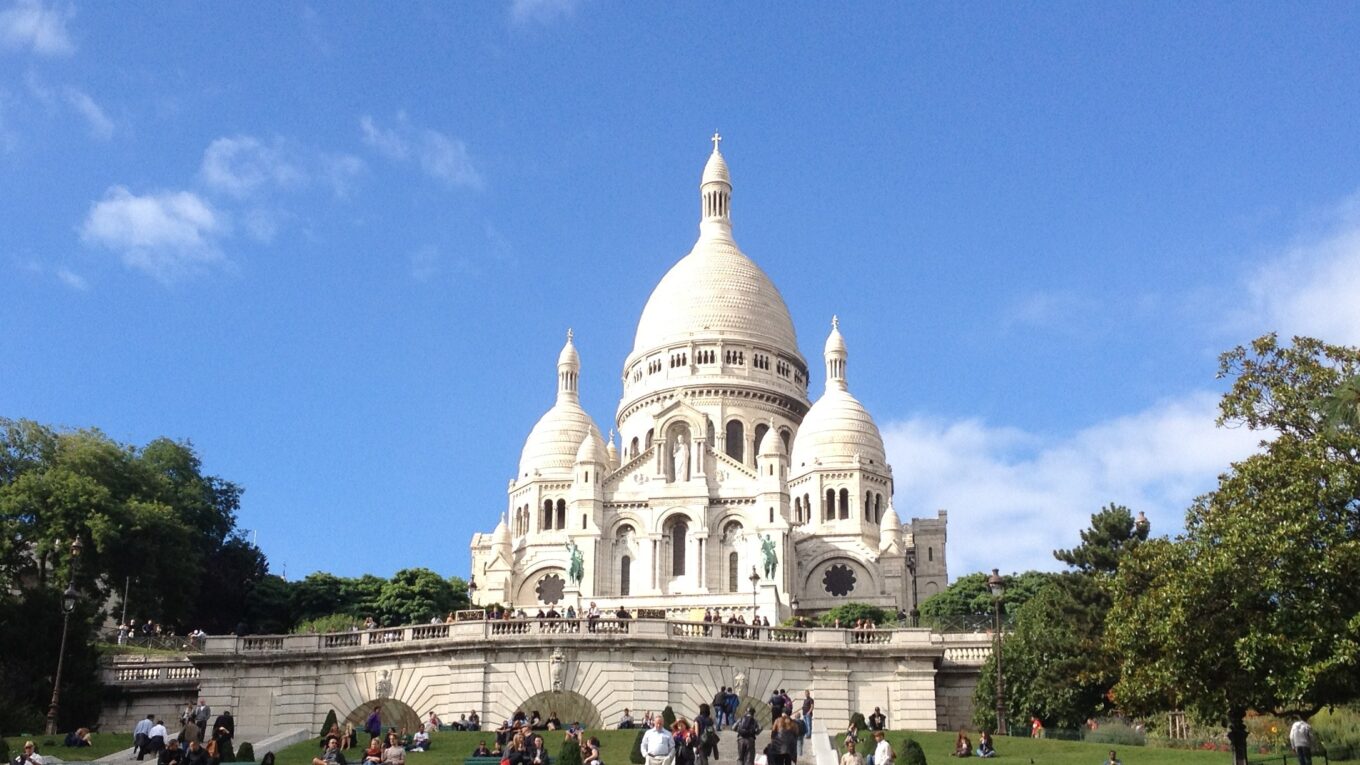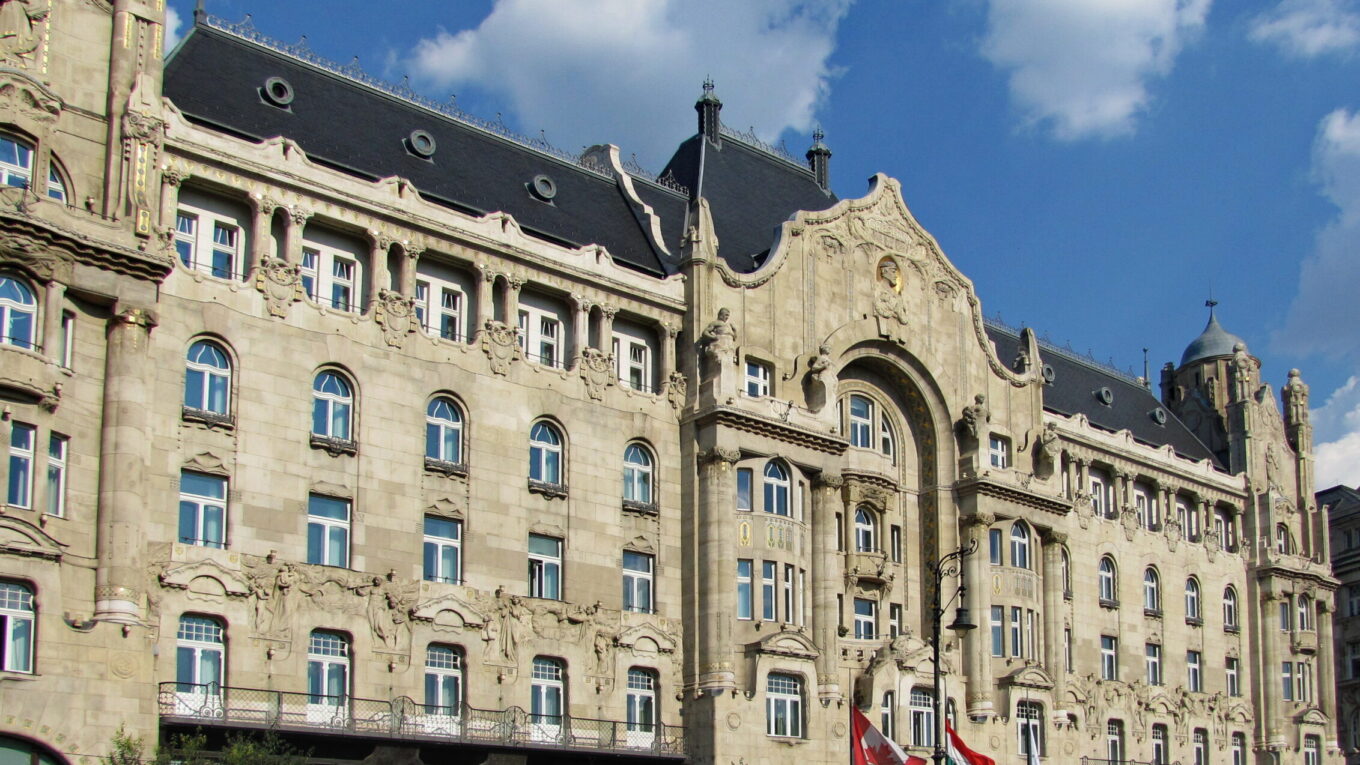Top 25 Examples of Mughal Architecture
The Mughal Empire once ruled over a large portion of modern-day India, Pakistan, Bangladesh, and Afghanistan. The empire was founded in 1526 by Babur. He was a conqueror who descended from both Genghis Khan and the great Timur. The term Mughal can be translated to Mongol, a name that comes from the dynasty’s Turko-Mongol ethnicity. The Mughals ruled their empire with absolute power. They established a strong taxation system and an effective government. This led to a golden age during the 17th & 18th centuries. The Mughals built dozens of incredible works of architecture, including the Taj Mahal and the Red Fort. Both of these are among the most visited sites in all of modern-day India. Below is a list of the greatest works of Mughal Architecture and a look at the evolution of the mighty Mughal Empire.
Who were the Mughals?
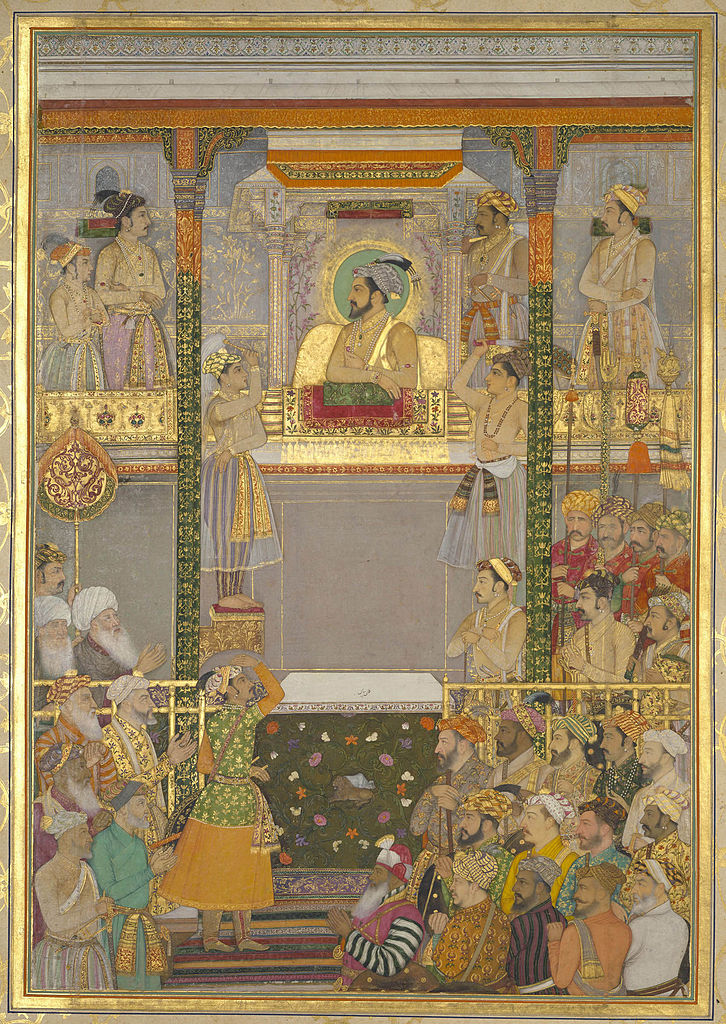
The Mughals were a foreign invader within India, and their lineage can be traced back to the Timurid Empire that existed in central Asia. The founder of the Mughal Dynasty was a man named Babur, who was a descendent of Timur. He invaded India and founded his dynasty in the year 1526. Subsequent Mughal Rulers would then greatly expand the empire.
The Mughals were Muslims, and they built dozens of mosques in an effort to help the spread of Islam. Today much of the Islamic population living within India, Pakistan, and Bangladesh can be traced back to the days of the Mughals.
Darbar of Shah Jahan, Page from the Windsor Padshahnama from 1657 – Public Domain
History of the Mughal Empire
There are three main emperors whose rules illustrate the rise and fall of the Mughal empire. The first is Akbar, the son of the founder of the Mughal Dynasty Babur. Akbar ruled for nearly 50 years from 1556-1605. He was a conqueror and significantly grew the size of the empire. Akbar was known as a tolerant ruler who accepted all faiths including Hinduism, and Jainism. Akbar was a great patron of the arts and of academics. He commissioned the construction of several of the greatest works of Mughal Military Architecture.
Shah Jahan was the famous Mughal Emperor who built the Taj Mahal. He ruled from 1628-1658 during a period that was a cultural peak for the Mughal Empire. The Taj Mahal’s fine detailing and extravagant materials show how powerful the Mughals were at this time. While the Taj Mahal may be the most well-known example, there are countless other works of Mughal Architecture that can be found throughout India, Pakistan, and Bangladesh.
Aurangzeb ruled from 1658-1707 and was a skilled military commander. He conquered new lands and brought the Mughal Empire to its greatest territorial extent. However, Aurangzeb is also known as an oppressive ruler, who often mistreated the Hindu population. He introduced a special tax for all non-muslims that was extremely unpopular. He also built several impressive mosques and other buildings while neglecting sacred temples. Aurangzeb’s rule marks the initial decline of Mughal control over their empire, and eventually, a new threat known as the Maratha Empire would invade from Southern India.
The Marathas took over most of the Mughal territories before making a final move on Delhi in the late 1700s. However, they were only able to hold onto power for a short time. In 1818, after a series of expansionary wars, the British took control of most of the Indian Subcontinent. The British re-established the Mughal Dynasty, but the Mughal emperor was used as a puppet ruler, while the British East India Company had most of the power. The final Mughal Emperor was sent into exile in 1857 after being caught in a plot to push the British out of India.
Characteristics of Mughal Architecture
Islamic Influences
Photo by Ujphotos from Wikimedia Commons

In nearly all works of Mughal Architecture you can see a heavy Islamic Influence. Islamic building elements such as pointed arches, Muqarnas, Minarets, and domes can be found throughout the buildings of the Mughal Empire. In the above image of the Badshahi Mosque in Lahore Pakistan, you can see several of these characteristics. The towering minarets were a high point where individuals would chant the Islamic Call to Prayer. The Mosque is also built with three Onion Domes, a characteristic found in older works of Persian and Timurid Architecture.
Hindu Influences
Photo by Nadeem Abbas Mushtaq from Wikimedia Commons

Although the Mughals practiced Islam, Mughal Architecture utilizes many elements from Hindu Temples. Hinduism was the dominant religion in the heart of India long before the arrival of the Mughals, and today roughly 80% of India identifies as Hindu. In the above image at the Lahore Fort in Pakistan, you can see ornately decorated column capitals that feature Indian elephants. The elephant was a symbol in many of India’s ancient religions, and it blends in perfectly with the other Islamic Architectural elements that can be found within the Lahore Fort.
Red Sandstone
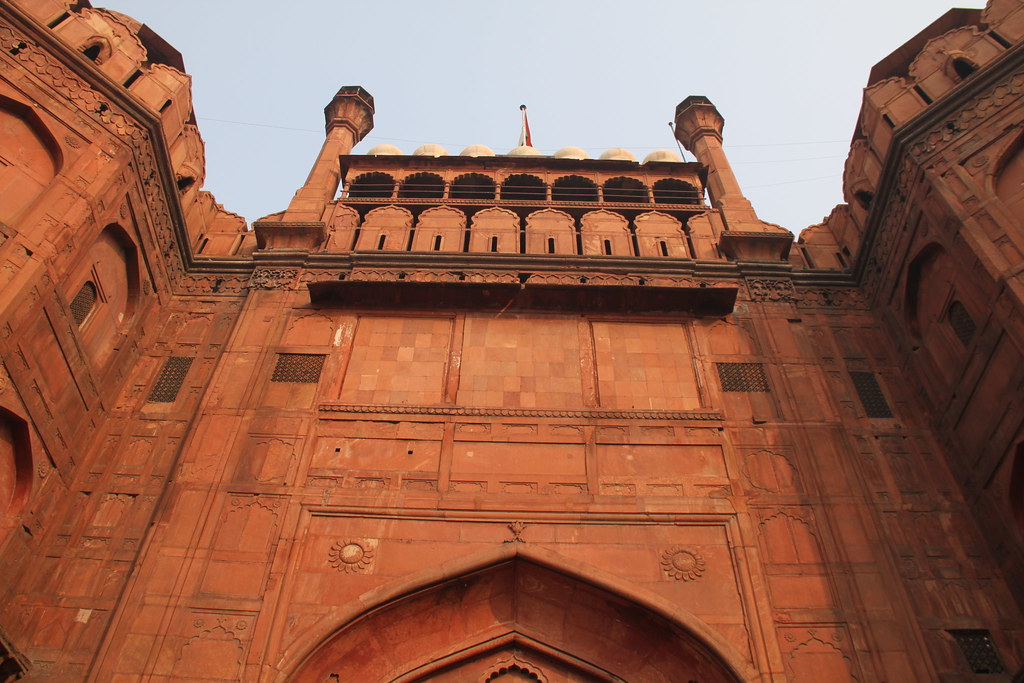
Another element that can be found throughout the Architecture of the Mughal Empire is the use of Red Sandstone. This particular sandstone was abundant in parts of the empire, and the distinct reddish hue of the stone can be found in several iconic buildings such as the aptly named Red Fort. The image above shows one of several monumental gateways into the Red Fort, each one decorated with carved pieces of sandstone. The building material is also found in the Agra Fort, the Jama Masjid, and in the outer buildings of the Taj Mahal complex.
Stone Inlays
Photo by Gerd Eichmann from Wikimedia Commons

Many of the finer works of Mughal Architecture contain intricate stone inlays. The use of Stone Inlays is a common ornamentation technique that has been around since ancient times. It saw a particular resurgence from the 16th to the 19th centuries. In Europe, it is often referred to as Pietra dura, which is an Italian term used for a craft that gained popularity in the Renaissance. In India, the art is known as Parchin Kari, and the Taj Majal contains the finest examples of it. Here you can see Arabic Script in a border surrounding another inlay of flowers and vines. The rich colors of the stones are part of what gives the Taj Mahal its distinct appearance.
Fortifications
Photo by Jakub Hałun from Wikimedia Commons

Fortifications, along with mosques and tombs, are some of the most impressive forms of architecture built by the Mughals. Just like countless other empires that have ruled in the past, the Mughals had to build forts and castles as a way to help protect their conquered lands. Several massive Mughal forts were built in a vast defensive network. These include the Red Fort, the Lahore Fort, and the Agra Fort among others. In the image above of the Agra Fort, you can see how it’s built with thick sandstone walls that were once outfitted with numerous cannons.
What are the best examples of Mughal Architecture?
The Mughal Empire dominated their territory from the early 1500s to the early 1700s, and in that time they built countless mosques, forts, mausoleums, and other buildings. Below is a list of some of the greatest examples of Mughal Architecture and a look at the origins and history of the Mughal Empire.
1. Taj Mahal – Agra, Uttar Pradesh, India
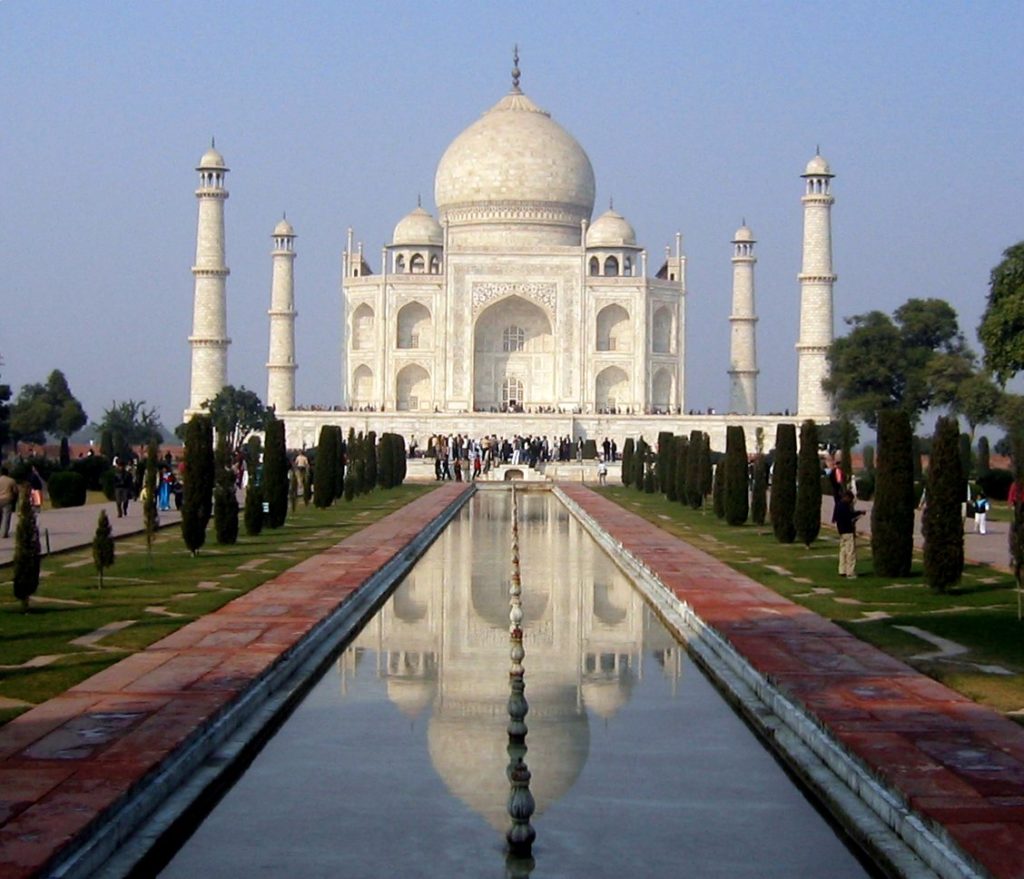
The Taj Mahal is one of the most recognizable buildings in the world. Its iconic white marble exterior is one of the finest examples of Mughal craftsmanship. Construction took place from 1632–1653 during the reign of Mughal Emperor Shah Jahan. Shah Jahan ruled at a high point in Mughal history, and he spent an enormous sum of money building the Taj Mahal. His successor was Aurangzeb, who tried his best to expand the domain of the empire while also avoiding the costly opulent lifestyle of his predecessor.
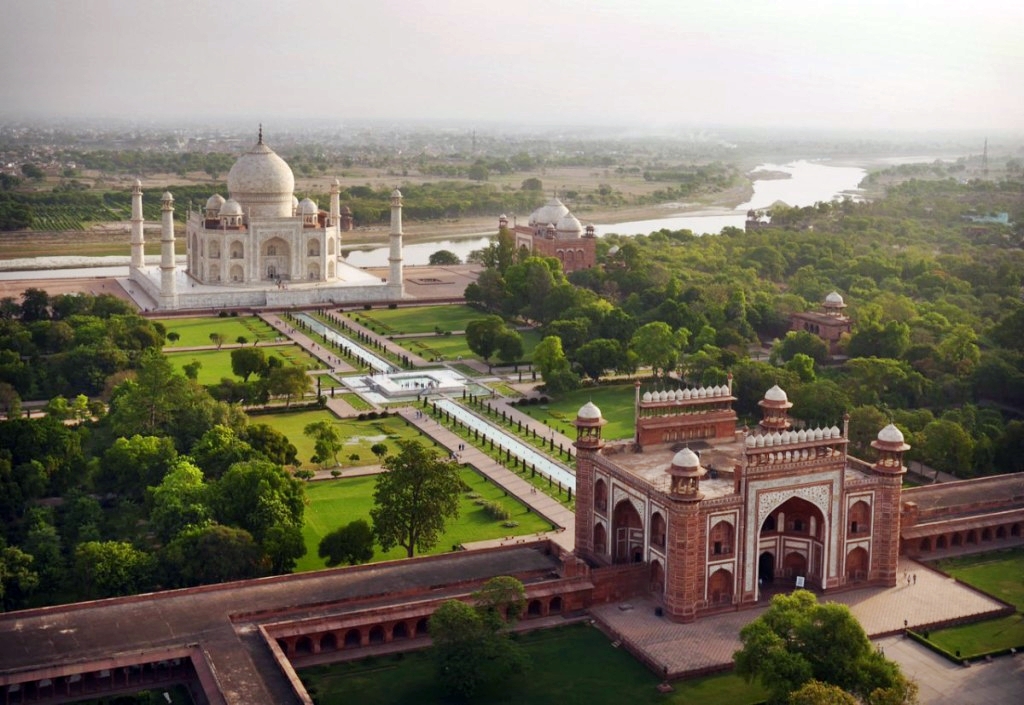
Although the white central structure is the most photographed portion, the Taj Mahal is actually a complex of several different buildings. There is a low wall surrounding the entire area, which is complete with a few large gateways. The outer portions of the complex are mostly built from the distinct Red Sandstone found throughout much of the architecture in this region of India. The whole place sits along the banks of the Yamuna River in Agra.

The Taj Mahal was built to honor the wife of Shah Jahan. Her name was Mumtaz Mahal, and the building was meant to act as her mausoleum when she died. Within the center of the Taj Mahal, you will find here grave, along with that of Shah Jahan himself. Today the Taj Mahal is one of the most visited landmarks on earth and it’s permanently enshrined as a UNESCO World Heritage Site. Because of its iconic nature and its impressive history, the Taj Mahal is regarded by many as the best work of Architecture from the Mughal Empire.
2. Red Fort – Old Delhi, Delhi, India

The Red Fort is a huge defensive fortification located within the old portions of Delhi. The building was the residence of the Mughal Emperors during the points when Delhi served as the empire’s capital. Shah Jahan commissioned the construction, and work began in the year 1638. The fort is surrounded by walls that are nearly 60 feet (18 m) high and there are towers over 100 feet (33 m) tall. Just like many other Mughal Forts, the Red Fort is built primarily with Red Sandstone, which is a common element within Mughal Architecture.
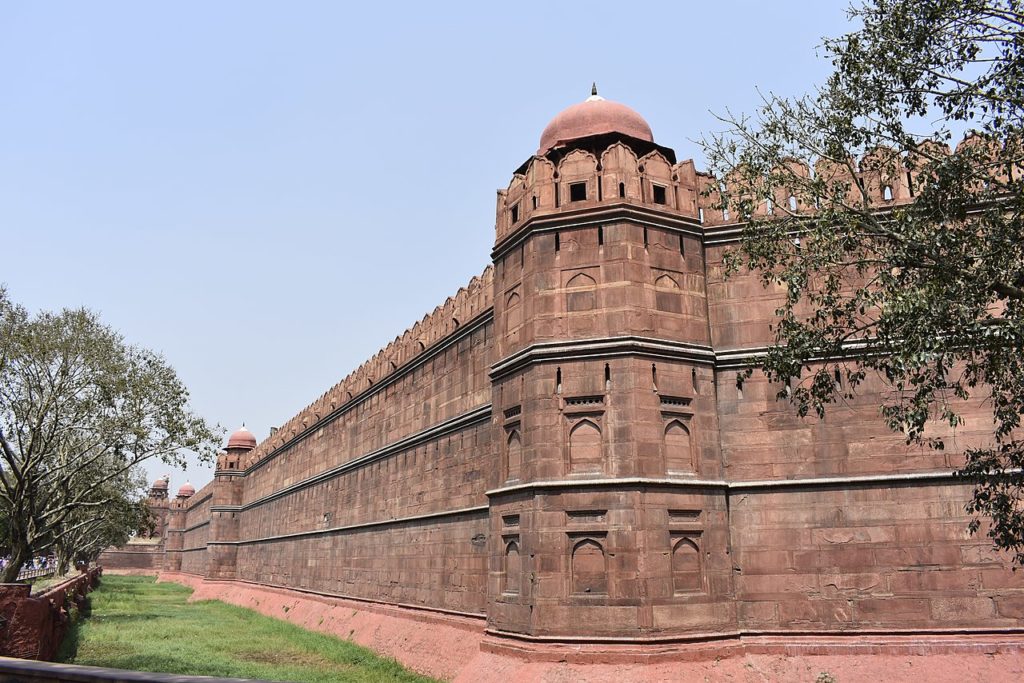
The Red Fort was a prominent military outpost, and it helped the Mughals secure control over Delhi and the surrounding area. However, despite the strength of the fort, it still fell to the forces of Nader Shah, the ruler of Persia. He lead his army out of modern-day Iran, and into the heart of the Mughal Empire. He sacked the city of Delhi in 1739 and took countless riches from the Red Fort and other important Mughal buildings. The Persian invasion marked a low point in Mughal history, and the empire fell into a rapid state of decline immediately following.
3. Badshahi Mosque – Lahore, Punjab, Pakistan
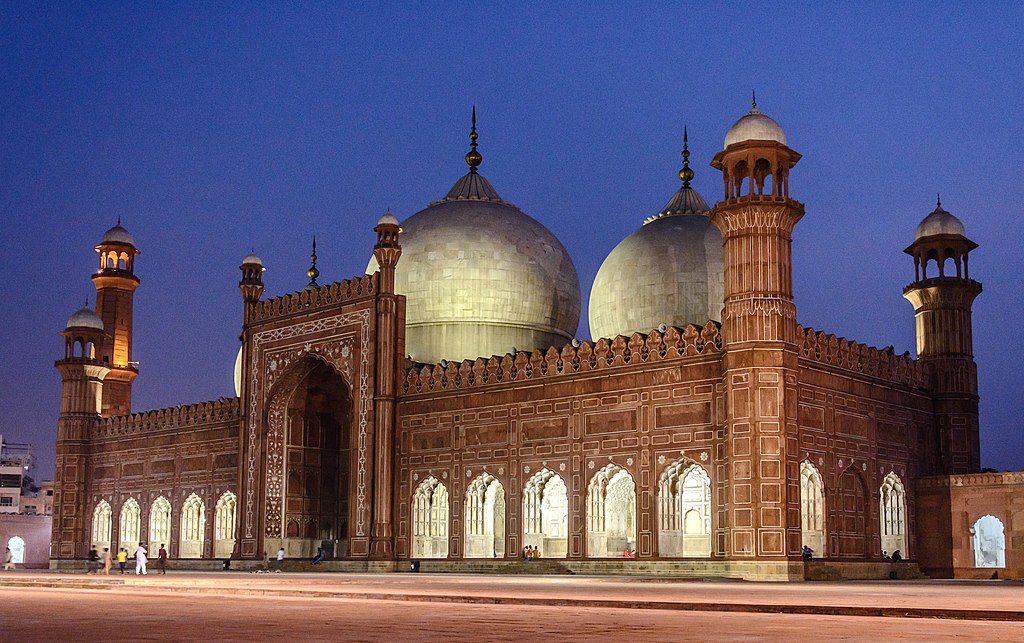
The Badshahi Mosque is one of several notable works of Mughal Architecture within the Pakistani city of Lahore. Lahore served as the capital of the Mughal Empire during the late 16th century, and it was originally conquered by Babur in 1524. Today Lahore is the capital of the Punjab region, which is a historic territory that is now split between modern-day Pakistan and India. After the decline of the Mughal Empire, Lahore became the capital of the Sikh Empire, which was a new powerful state that at one point controlled most of the Punjab region.

The Badshahi Mosque was completed in 1673 during the reign of Emperor Aurangzeb. It features all of the main elements of Mughal Architecture. The building is built from the typical Red Sandstone, and it contains minarets, domes, and pointed arches from Islamic Architecture. Mosques were important to the Mughals. because they gave the Islamic members of the empire a place to worship. and they were built as a way to inspire local populations and spread Islam.
4. Jama Masjid – Old Delhi, Delhi, India
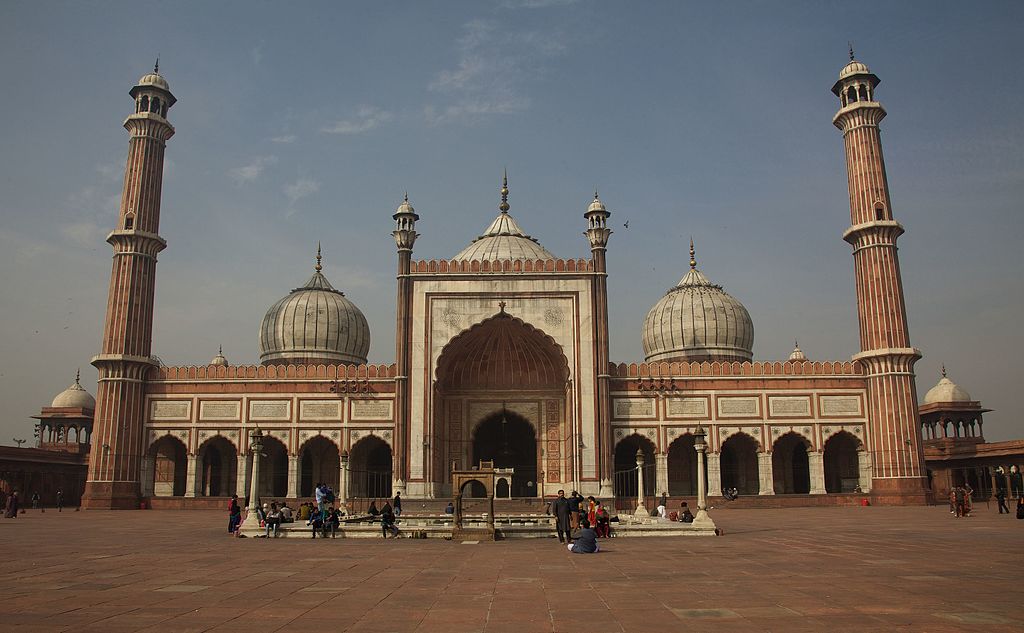
Jama Masjid is a mosque in Delhi that holds a special religious ceremony every Friday. Jama Masjid is a term that translates to Congregational Mosque or Friday Mosque. The Jama Masjid in Delhi is one of the largest mosques in all of India and it was completed in the year 1656. It’s located in the heart of what is known as Old Delhi, a district within the broader city of Delhi. Originally, the area around the mosque was a walled city known as Shahjahanabad, which was named for the Mughal Emperor Shah Jahan.

All mosques share several of the same characteristics and follow a similar format. Here at the Jama Masjid there is a central prayer hall complete with two Minarets. Just outside the prayer hall is the courtyard, which is completely surrounded by a set of walls with a large fountain in the middle. This layout matches the configuration of the world’s first mosque, which was the home of the Profit Muhammad. Mosques are the principal building in Islamic Architecture, and the many Mosques of the Mughal Empire show how devout and dedicated they were to Islam.
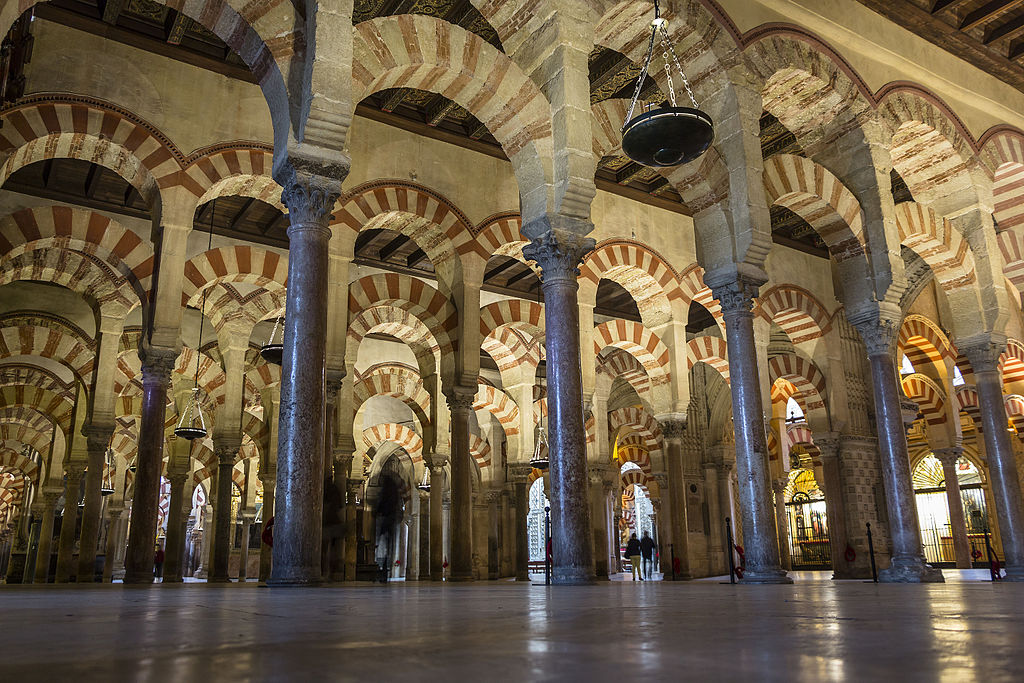
Interested in Islamic Architecture? Check out our article on the Moorish Architecture of Spain to learn more!
5. Tomb of Jahangir – Lahore, Punjab, Pakistan

The Tomb of Jahangir was designed as a testament to the fourth ruler of the Mughal Empire, Jahangir. He ruled from 1605-1627, and was the son of Akbar. Jahangir’s Tomb is one of several royal tombs dedicated to Mughal Emperors. Although not as lavish as his son Shah Jahan’s tomb at the Taj Mahal, The Tomb of Jahangir is still one of the most impressive tombs in all of India. The exterior features ornate tilework with intricate geometric patterns reminiscent of other Islamic buildings in the Middle East.
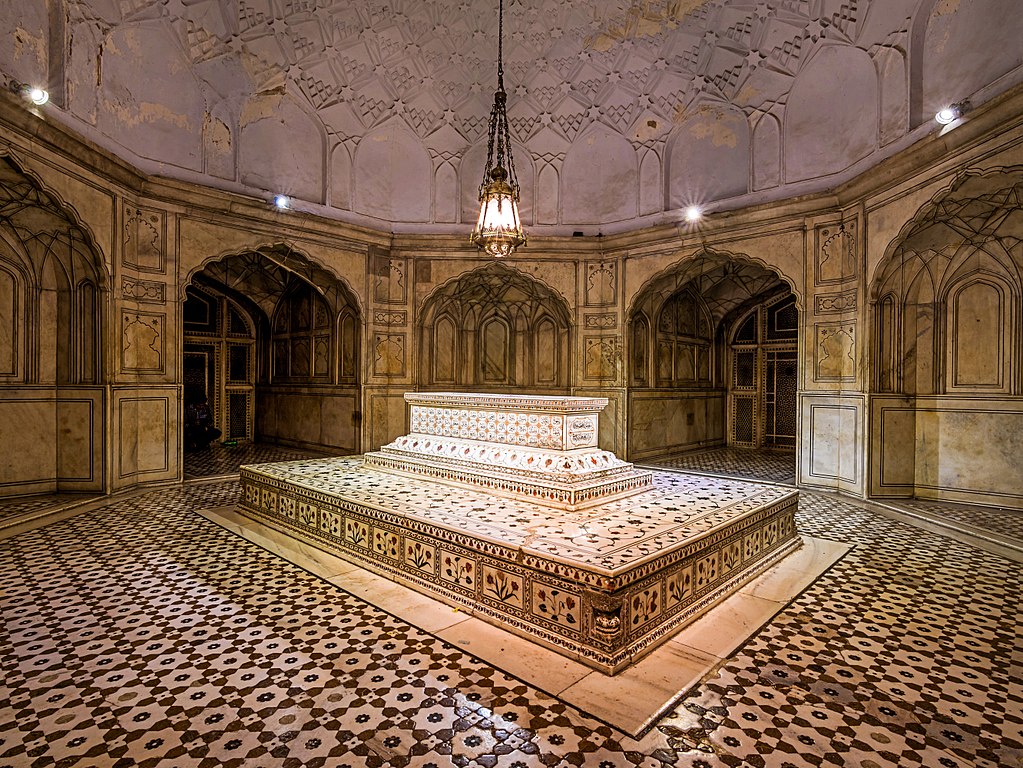
The actual grave of Jahangir is located within the middle of the structure, and it contains some of the finest stone inlays or Parchin Kari found anywhere in India. While Jahangir is often overshadowed by many other Mughal rulers, he still ruled the empire just as it was beginning to peak into one of the wealthiest and most powerful nations on earth. Many great works of Mughal Architecture are dedicated to Jahangir, including his tomb, and the Jahangir Mahal located in Orchha India.
6. Lahore Fort – Lahore, Punjab, Pakistan
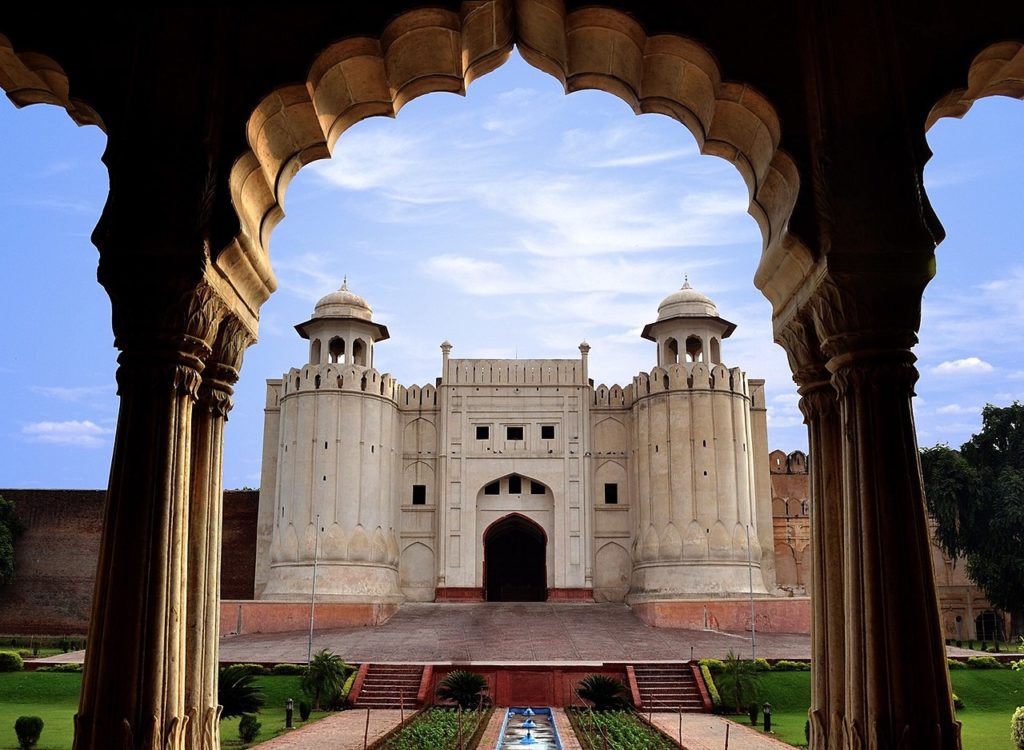
The Lahore Fort is one of the many fortifications built by the Mughals. Lahore served as the capital of the empire during the reign of Akbar, starting in 1586. Eventually, Akbar moved the capital to Agra, but Lahore remained an important city for centuries. The Lahore Fort once served as a royal residence, and the architecture of the fort was heavily modified throughout history. In the image above you can see the Alamigiri Gate which was added in the late 1600s under the reign of Aurangzeb. The new gate was built with white marble and it served as a monumental entrance to the fort that was meant to show off the wealth of the Mughal Empire.
7. Agra Fort – Agra, Uttar Pradesh, India

Just like the Lahore Fort and the Red Fort in Delhi, Agra contains a massive castle-like building known as Agra Fort. Agra, like Lahore and Delhi, took a turn as the capital of the Mughal Empire during the rule of Shah Jahan. The majority of the fort is made from red sandstone, an abundant building material in India. The thick walls of the fort were meant to protect against cannon fire, and at one time the Agra Fort was outfitted with a myriad of its own cannons. All of the great Mughal Forts were meant to help secure their domain from both outside attackers and internal rebellions. This fortification strategy is apparent in many different historical conquests such as the First Crusade, and the Norman Conquest of England.
8. Tomb of I’timād-ud-Daulah – Agra, Uttar Pradesh, India

The Tomb of I’timād-ud-Daulah is another Mughal Tomb, that is reminiscent of the Taj Mahal. It was built in a similar style, although at a much smaller scale. The central building is made from exquisite white marble, intricately decorated with stone inlays. This technique is found throughout Mughal Architecture, and the inlay work at the Tomb of I’timād-ud-Daulah was one of the earlier examples of this newly perfected artistry. The tomb also features a few marble screens that are intricately carved in traditional Islamic Geometric Patterns. The elegant marble work is what makes the tomb one of the greatest ever built by the Mughals.
9. Akbar’s Tomb – Agra, Uttar Pradesh, India
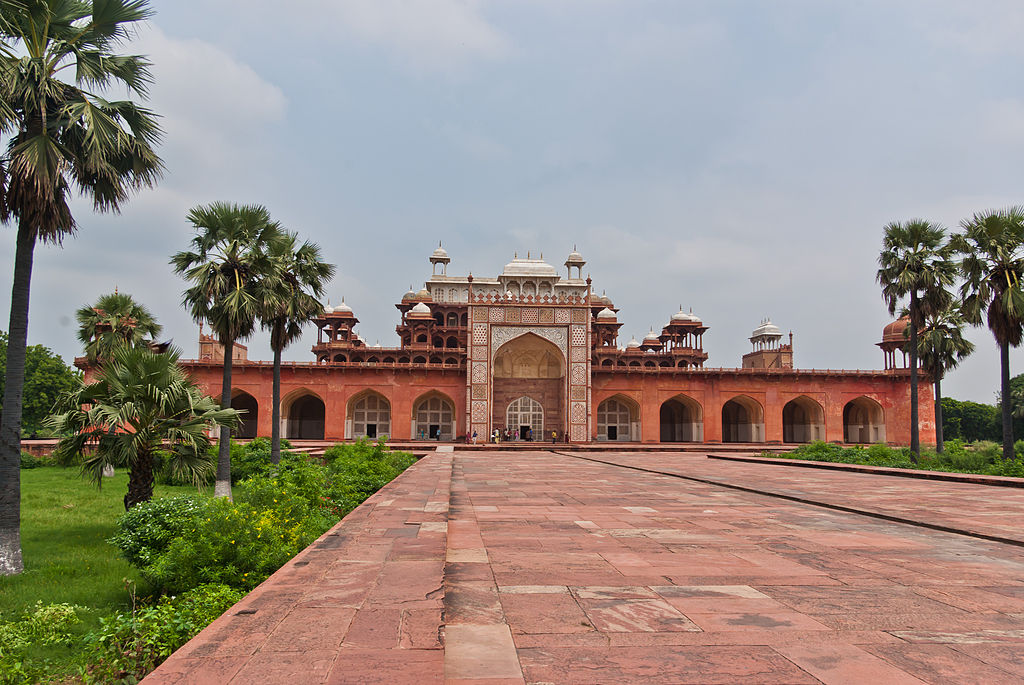
Akbar, who is also known as Akbar the Great, was the third Mughal Emperor. He had a lengthy tenure on the throne from 1556 to 1605. He is known as “the great” because he was such an effective ruler. He significantly expanded Mughal territory through military conquest, reformed the entire Mughal Government, and was a patron of art, science, and mathematics among other scholarly fields. Of course, like with so many other great rulers from history, Akbar was buried in a magnificent tomb, fit for a man with his esteemed accomplishments. The Tomb of Akbar is located in Agra and it was built by Akbar’s son shortly after his death in 1605. Its possibly the greatest example of Early Mughal Architecture, which was built primarily with red sandstone with marble elements and detailing.
10. Humayun’s Tomb – New Delhi, Delhi, India
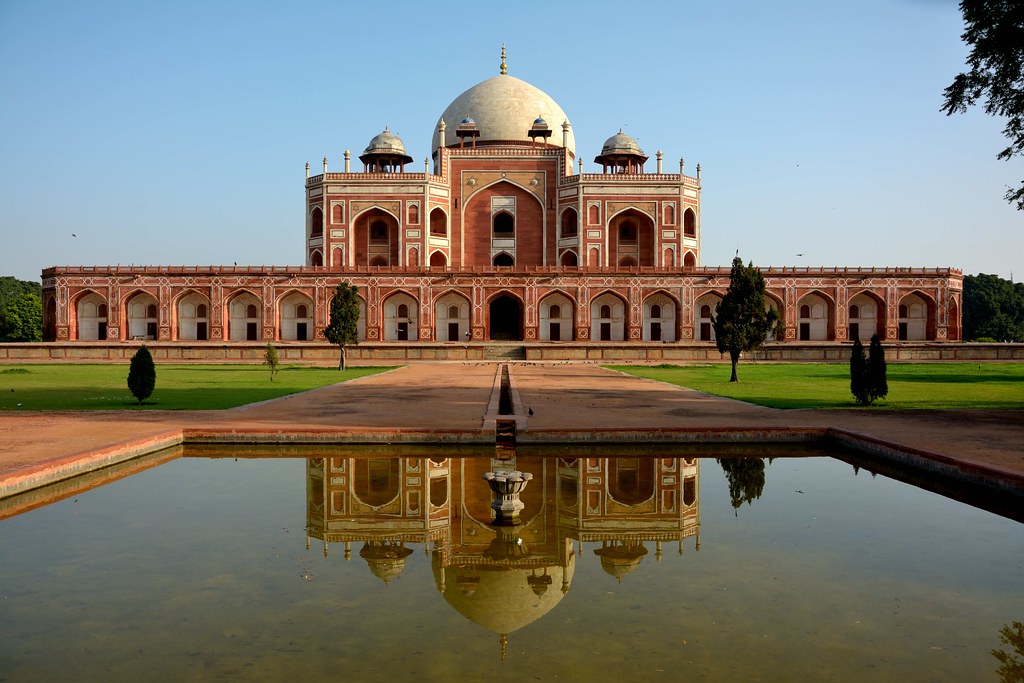
Humayun was the son of Babur, the first Mughal Emperor, and he ruled the Mughal Empire for 10 years from 1530-1540. But Humayun lost the majority of Mughal territories to a usurper named Sher Shah Suri. He founded the short-lived Sur Empire and moved his capital to the city of Sasaram. Humayun was eventually able to rally support and took back all of the Mughal territories he had once lost. He reinstated Mughal dominance starting in the year 1555, and he passed the throne onto his son and heir Akbar. Humayun’s tomb is one of three UNESCO World Heritage Sites located within the city of Delhi.
11. Wazir Khan Mosque – Lahore, Punjab, Pakistan
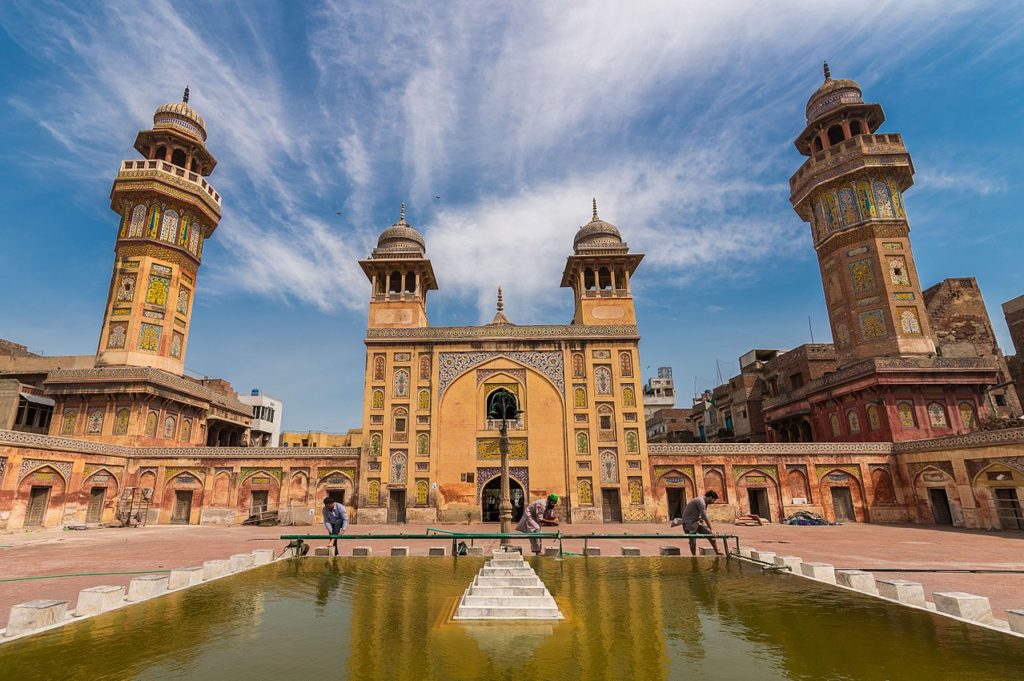
The Wazir Khan Mosque is one of several mosques built by the Mughal Empire within the city of Lahore. Work began on the mosque in 1634, and construction took over 7 years. It was built during the reign of Shah Jahan, at a cultural high point for the Mughal Empire. Although it’s not built of white marble like many other buildings dating to the reign of Shah Jahan, the Wazir Khan Mosque is still incredible thanks to its use of glazed ceramic tiles. These are common throughout Islamic Architecture, and the tiles are intricately decorated with bright colors. Most of the designs feature flowers and vegetation, in addition to shapes and geometric patterns.
12. Khusro Bagh – Allahabad, Uttar Pradesh, India
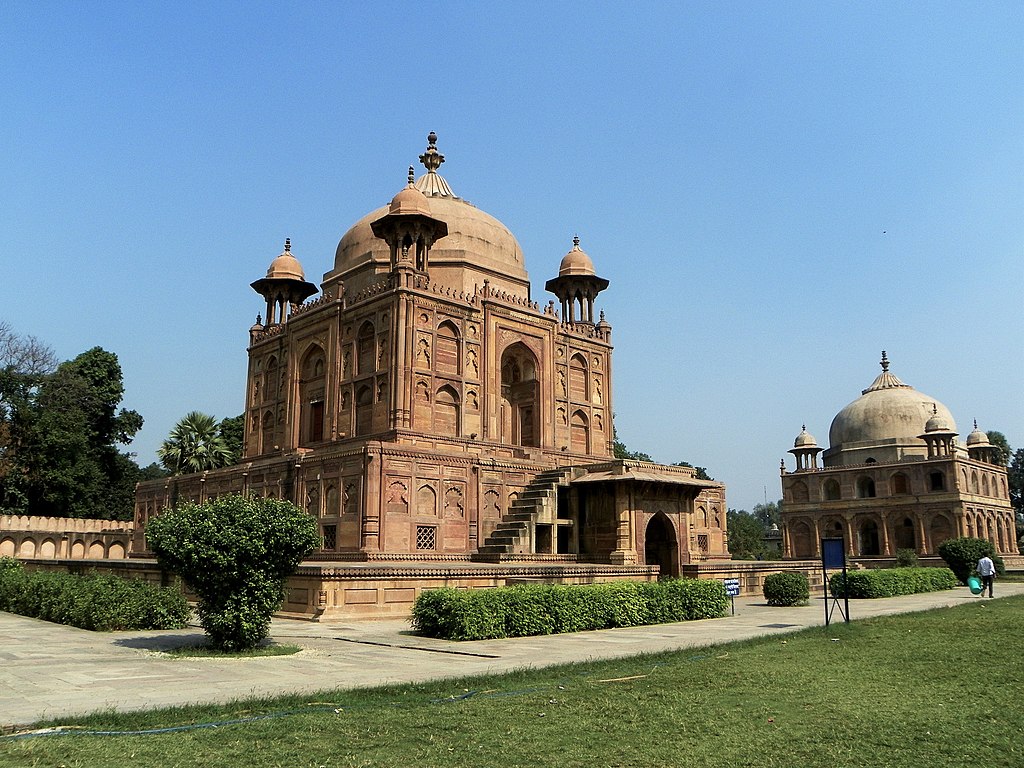
Located in the city of Allahabad, the Khusro Bagh is a complex of buildings and gardens all built by the Mughal Empire. Most of the project was built by Jahangir, who was the fourth Mughal Emperor. Jahangir was a powerful ruler but his reign was marked by political strife, rebellion, and tragedy. The complex of Khusro Bagh contains the tombs of two of Jahangir’s children – his eldest son and one of his daughters. Nearby within the compound is another tomb dedicated to one of Jahangir’s several wives. Khusro Bagh and the nearby Akbar Fort are two great examples of Mughal Architecture within the city of Allahabad, also known as Prayagraj.
13. Diwan-i-Khas – Delhi & Lahore

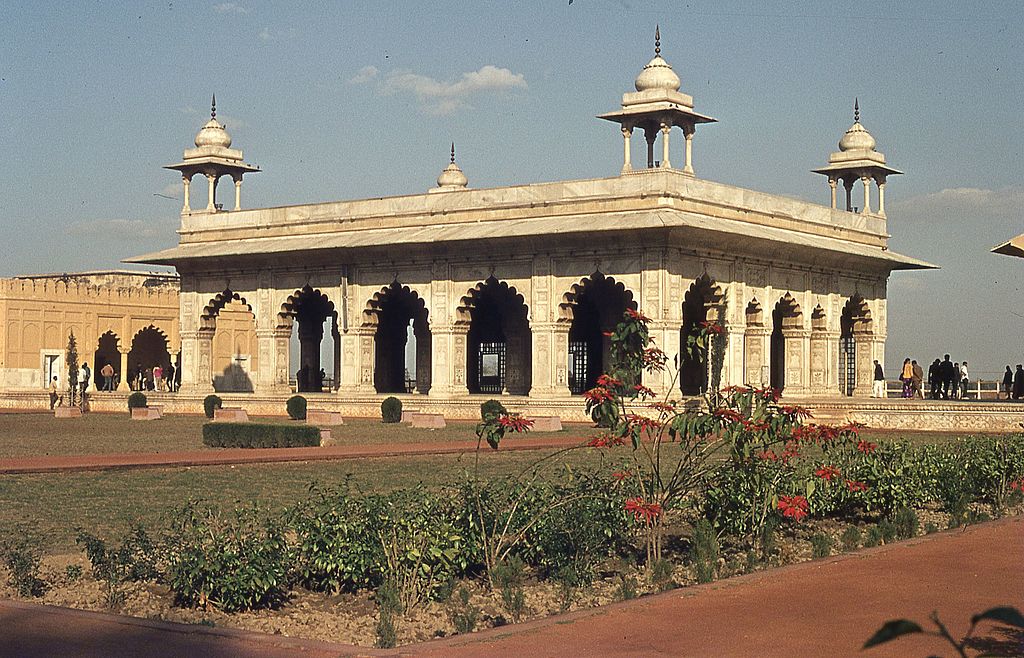
(right) The Diwan-i-Khas at the Red Fort in Delhi – Phot0 by Fortepan / Lőw Miklós from Wikimedia Commons
Diwan-i-Khas is a term that translates in English to the Hall of Private Audiences. It was a space where the Mughal emperors would hold private events and meet with honored guests and diplomats. Several major Mughal fortresses had their own Halls of Private Audiences. In the left image above is the Diwan-i-Khas within the Lahore Fort and in the right image, you can see the one within the Red Fort in Delhi. Both structures are built in a similar manner and they both use the same pristine white marble. Particular emphasis was put into the Diwan-i-Khas when compared to the rest of the fort. The expensive materials paired with the detailed craftsmanship in the stonework were meant to impress guests of the emperor.
14. Bibi ka Maqbara – Aurangabad, Maharashtra, India
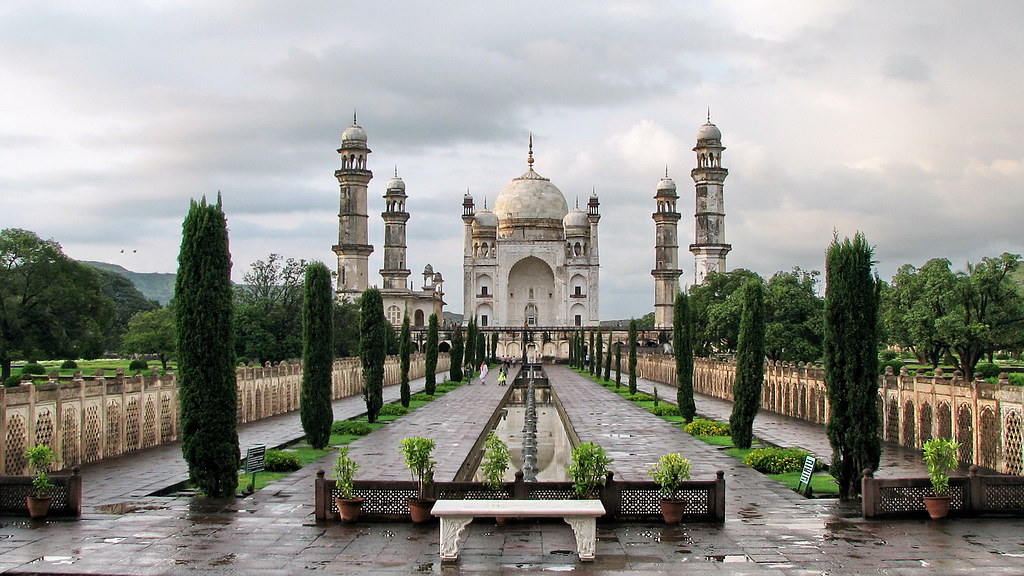
It’s easy to see why the Bibi ka Maqbara has a reputation of being a sort of miniature Taj Mahal. Its overall form is strikingly similar to the Taj, and both buildings are made from the same white marble. The Bibi ka Maqbara was commissioned in 1660 by the Mughal emperor Aurangzeb, whose mother is entombed within the Taj Mahal. The Mughal Architects clearly borrowed from the older Taj Mahal which was built starting in 1632. Although much smaller, the Bibi ka Maqbara is still an important work of Mughal Architecture, and it remains one of the most popular attractions within the city of Aurangabad to this day.
Like Architecture of Cities? Sign up for our mailing list to get updates on our latest articles and other information related to Architectural History.
15. Jahangir Mahal – Orchha, Madhya Pradesh, India

The Jahangir Mahal was built by a local Mughal ruler to honor emperor Jahangir’s visit to the city of Orchha. Orchha is one of the smaller cities in India, with a population of just over 8,000. Surprisingly, despite its small size it’s home to many incredible works of architecture. The Jahangir Mahal is positioned inside the Orchha Fortress, which is a fortification that was enlarged by the Mughals. Within the fort, there are several other notable buildings such as the Raja Mahal and the Rai Praveen Mahal. Within Orchha there is also the Chaturbhuj Temple, a massive structure dedicated to the Hindu deity Vishnu.
16. Hiran Minar – Sheikhupura, Punjab, Pakistan

The Hiran Minar is a complex of buildings located in the Pakistani city of Sheikhupura. The entire area was built per the orders of Jahangir, who wanted to create a site that was a place for enjoying nature and outdoor recreation. Within the center of a small pond inside the complex is a pavilion. The pavilion is then connected to the main shoreline via a bridge. At the end of the bridge is a multi-story minaret that stands alone as a monument dedicated to a deceased pet of the emperor Jahangir. The Hiran Minar is different than many of the other examples of Mughal Architecture on this list, and it shows a different side to the Mughals. The Mughals didn’t just build intimidating fortresses and lavish tombs, but also buildings and gardens that were designed for pleasure and enjoyment.
17. Jama Masjid – Agra, Uttar Pradesh, India

The Jama Masjid in Agra is one of several Friday Mosques built by the Mughal Empire. It sits just across from the Agra Fort and it’s one of many works of Mughal Architecture located within the city. The mosque was built during the reign of Shah Jahan, 10 years after he began construction of the Taj Mahal. In contrast to the Taj Mahal, the Jama Masjid is built in an older version of Mughal Architecture. Here the majority of the building is built with red sandstone, and there are a few accents in white marble. In contrast, the Taj Mahal is in a later form of Mughal Architecture, which is much more extravagant and built almost entirely of marble.
18. Tomb of Mariam-uz-Zamani – Agra, Uttar Pradesh, India
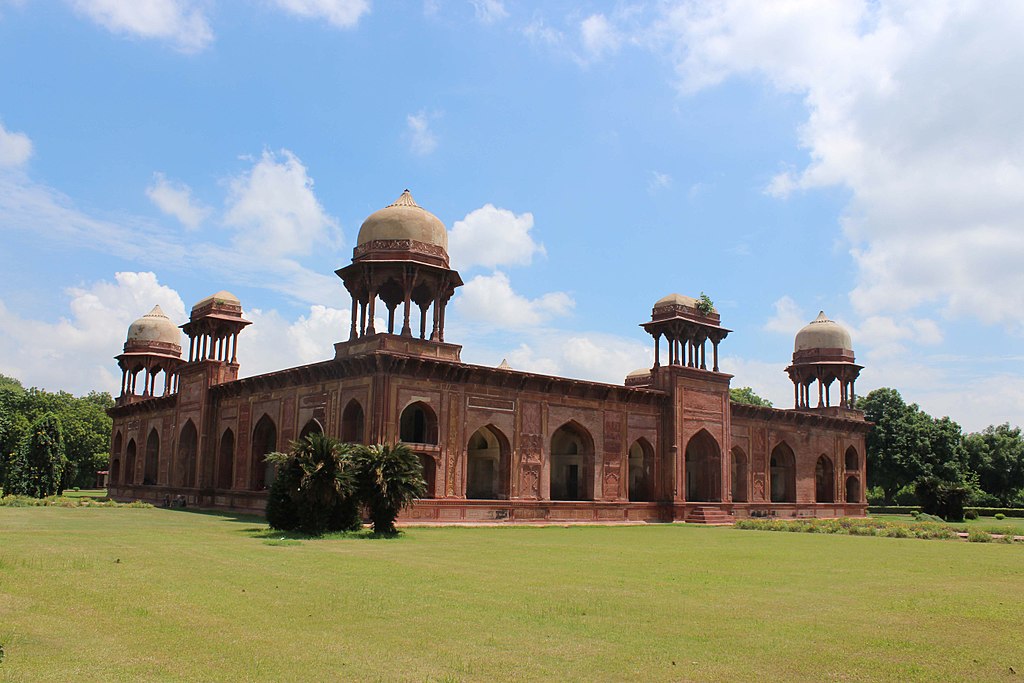
Another Mughal Tomb built shortly after Humayun’s is the Tomb of Mariam-uz-Zamani. It shows the typical blend of Hindu and Islamic influences found throughout Mughal Architecture. The lower arcade surrounding the tomb contains pointed arches and it resembles many other Islamic mosques and tombs. Above this at the four corners of the roof, there are four Chhatri. These small domed balconies are a decorative element found throughout Indian and Hindu Architecture.
19. Shalimar Gardens – Lahore, Punjab, Pakistan
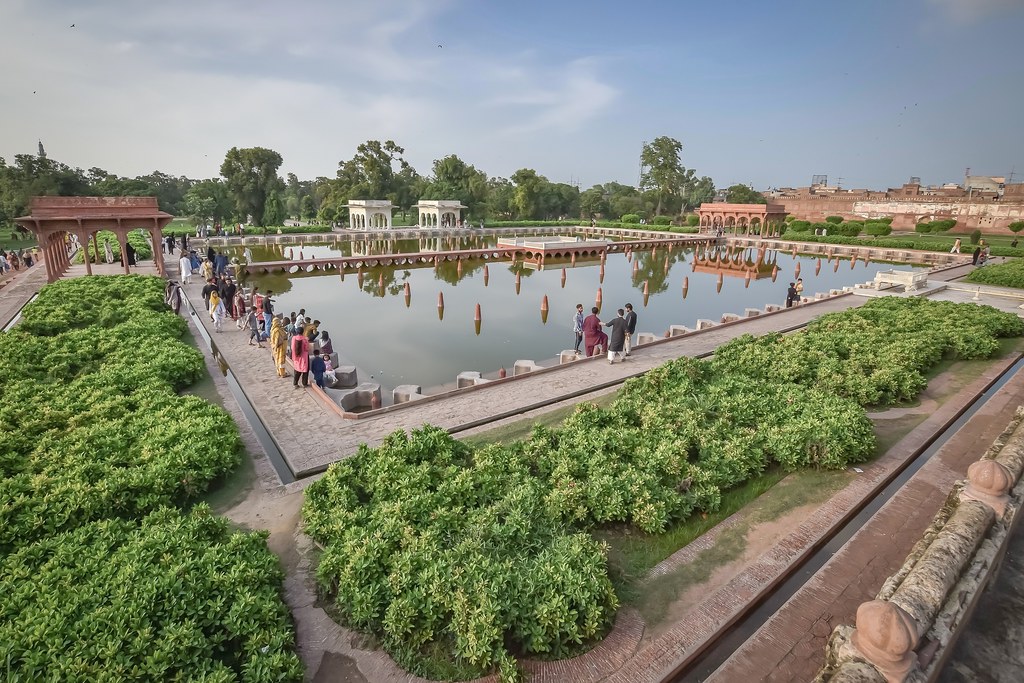
Like dozens of other empires throughout the world, the Mughals also built great gardens among their palaces and residences. In fact, the royal gardens of the Mughal Empire rival some of the great Baroque Gardens of wealthy European kingdoms. The Shalimar Gardens are built among other monuments within the city of Lahore in modern-day Pakistan. Several pathways wind through the reflecting pools and pavilions. The whole place was designed to be an elegant experience for both the royal family members and their honored guests. Along with the Lahore Fort, the Shalimar Gardens have been on the UNESCO World Heritage List since 1981.
20. Jama Masjid – Fatehpur Sikri, Uttar Pradesh, India
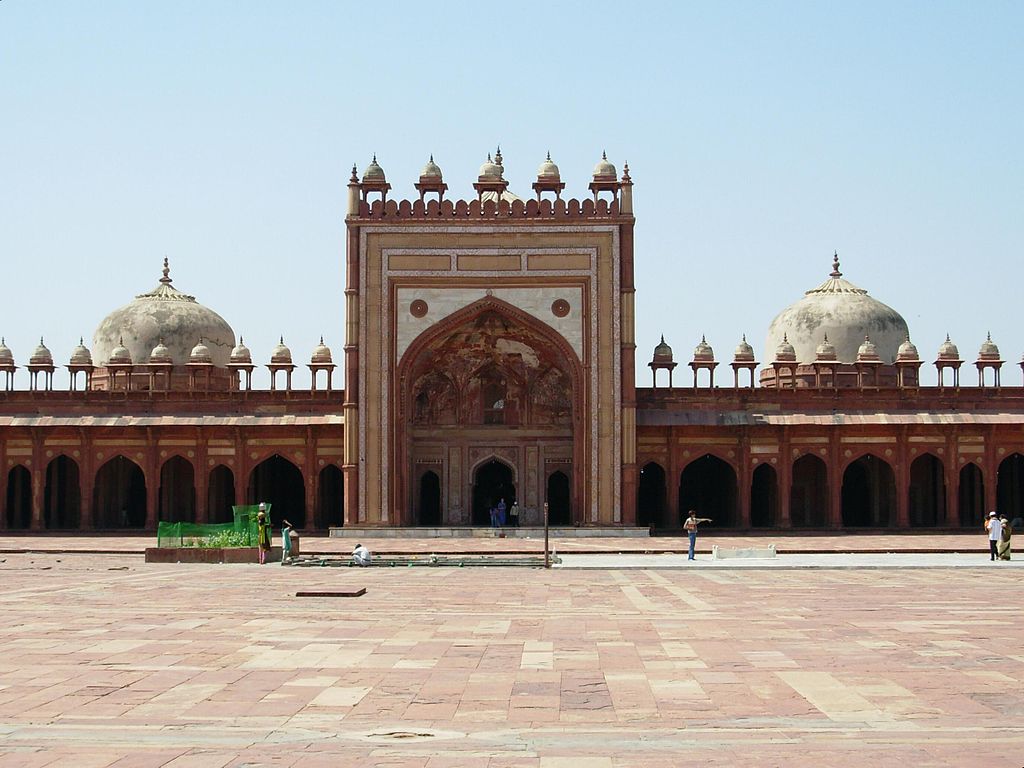
The Jama Masjid in Fatehpur Sikri is another Congregational Mosque or Friday Mosque, built by the Mughal Empire. The mosque was built during the reign of Akbar. It’s one of the earliest examples of Mughal Architecture. Fatehpur Sikri is a city that was founded by Akbar, and it served as the capital of the Mughal Empire for about 10 years. Most of the city was built from a unified form of Mughal Architecture and the Jama Masjid and the surrounding buildings are listed on the UNESCO World Heritage List.
21. Buland Darwaza – Fatehpur Sikri, Uttar Pradesh, India
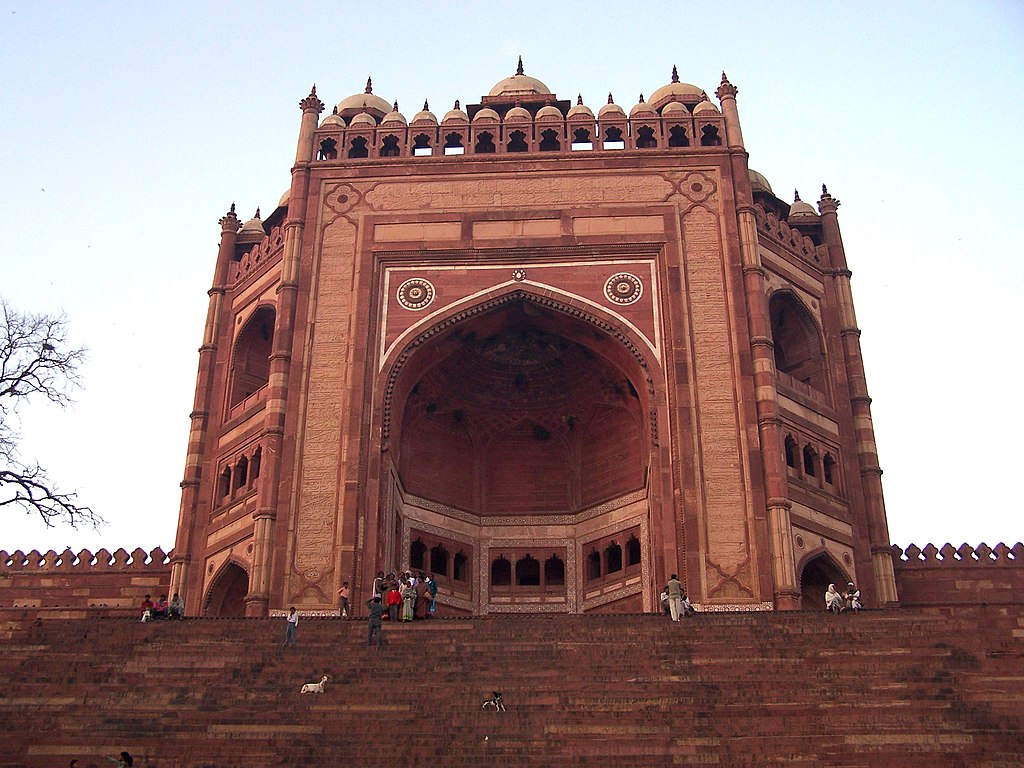
The largest gateway within the walls surrounding the Jama Masjid in Fatehpur Sikri is the Buland Darwaza. Its positioned in line with the main entrance of the mosque, and it serves as a monumental entrance to the courtyard. It was built by the Mughal Emperor Akbar the Great to commemorate one of his many military victories. The gateway soars over people entering the mosque. It stands over 131 feet (40 m) tall, and it’s built almost entirely from red sandstone. It’s similar to many other monumental gateways built around mosques, particularly in central and south Asia.
22. Shah Jahan Mosque – Thatta, Sindh, Pakistan
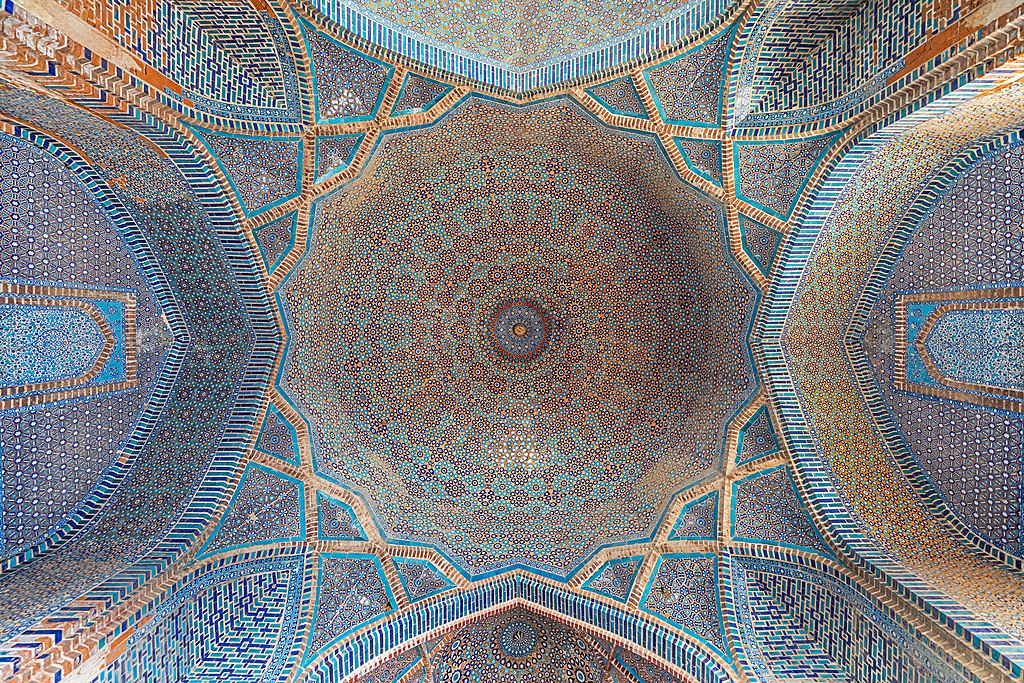
The Shah Jahan Mosque in Thatta Pakistan is a unique piece of Mughal Architecture. It is named for Shah Jahan, and it was completed in 1659. What sets this mosque apart from many other buildings on this list, is the influence of Persian and Timurid Architecture. The different shades of blue tiles are a key component in these styles. Most of the interior of the Shah Jahan Mosque is decorated with these tiles and they are all orientated in geometric patterns of striking complexity. This integral use of geometry and mathematics is a key idea in many works of Islamic Architecture. The presence of these characteristics shows how connected the Mughal Empire was with the rest of the Islamic World.
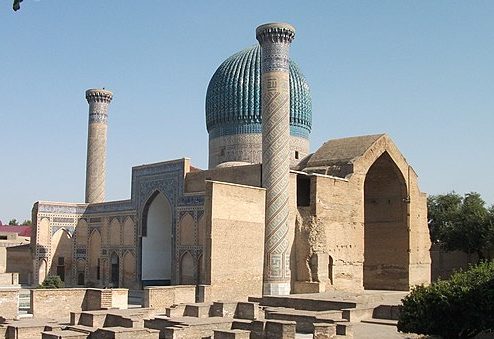
Interested in the Timurid Empire? Check out our article, “Timurid Architecture and the Timurid Renaissance” to learn more!
23. Sher Mandal – New Delhi, Delhi, India

The Sher Mandal is a monument located within the Purana Qila in Delhi. It was built in the early stages of the Mughal Empire in the 16th century and it features an eclectic mix of influences. You can see typical Islamic arches around the exterior facades, which are built from red sandstone. You can also the Jewish Star of David along with other geometric tilework decorating the exterior. The symmetrical octagonal design is another element of Islamic Architecture found in buildings like the Dome of the Rock in Jerusalem, and several Ottoman Mosques in Istanbul.
24. Idrakpur Fort – Munshiganj, Dhaka Division, Bangladesh
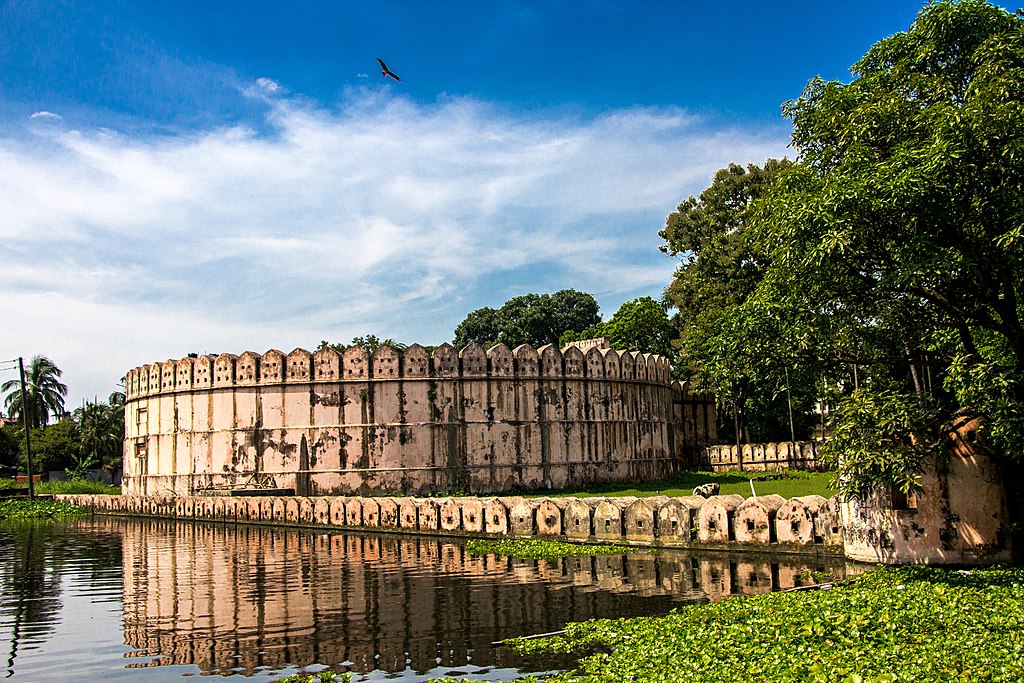
The Idrakpur Fort was part of the fortification network of the Mughal Empire. They built it along one of the many rivers that converge around the city of Dhaka, the modern-day capital of Bangladesh. It is positioned directly along the water’s edge so it could help defend Dhaka and other nearby cities from ships passing upstream. Although most of the buildings on this list are within India and Pakistan, Bangladesh was a prominent region within the Mughal Empire, and Dhaka was one of its wealthiest cities.
25. Sat Gambuj Mosque – Mohammadpur, Dhaka Division, Bangladesh

The Sat Gambuj Mosque is a Mughal-era mosque located on the outskirts of Dhaka. Along with the Idrakpur Fort, it’s one of two examples of Mughal Architecture in Bangladesh on this list. It was built in the 1600s when Mughal control over the region was strong. The multiple rivers that cross through the region around Dhaka made it one of the key trading centers within the empire. The mosque itself is rather modest when compared to the great monuments found elsewhere in the Mughal Empire. Although Dhaka was a wealthy commercial city, it didn’t really see the expansive building projects that took place in the Mughal Capitals of Delhi, Agra, and Lahore.
What happened to the Mughal Empire?
The Mughal Empire saw its territorial peak during the rule of Aurangzeb, but this peak also coincided with the start of the decline of Mughal control. Constant rebellions and successions would shrink the size of the empire, and a new threat emerged in the south known as the Maratha Empire. The Marathas essentially ended the Mughal Dynasty when they conquered several Mughal cities, including Delhi. Although they never took complete control, the Mughal Empire would never recover. The Marathas would be the dominant force in India until the arrival of the British East India Company. Over the course of three different conflicts in the early 1800s, the British took control of most of India, Bangladesh, and Pakistan.
The British took advantage of the status of the once-powerful Mughal Dynasty, and they established a puppet king to sit on the throne. Although they didn’t have any real power, the final Mughal Emperors remained a symbol of the former regime that had controlled the region for so long. The final Mughal Ruler was Bahadur Shah II who reigned from 1837–1857. In his final days as emperor, he attempted to stage a coup and overthrow the British but was unsuccessful. The British ended the Mughal Dynasty for good in 1857, and they exiled Bahadur. He then died five years later in 1862.
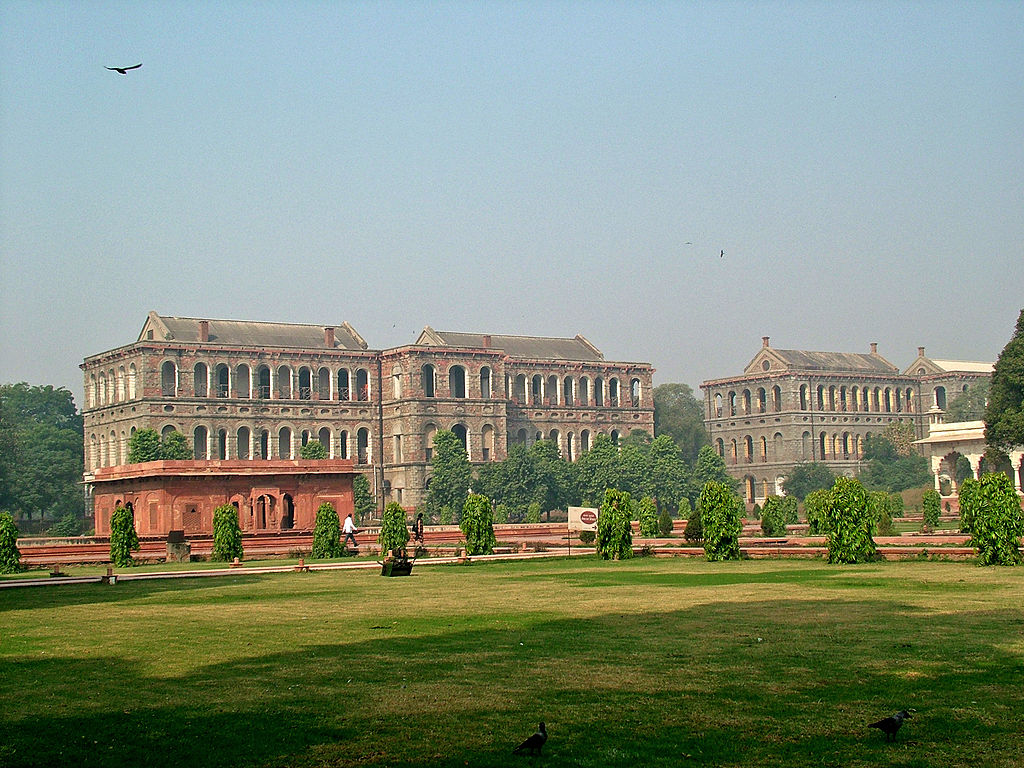
Photo by Guilhem Vellut from Wikimedia Commons
Architecture of the Mughal Empire Today

Many people think of the Taj Mahal when they think of Indian Architecture. It’s one of the most iconic buildings in the world, and it was constructed by one of the greatest empires of the 17th & 18th centuries. The Mughals were a powerful dynasty that built not only the Taj Mahal, but dozens of other incredible buildings within India, Pakistan, and Bangladesh. The Mughals combined Islamic and Hindu Architecture and paired it with materials like red sandstone and white marble. The Mughals built mosques throughout every major city in their empire, constructed a network of fortifications to protect their borders, and left behind massive tombs and monuments to show off their wealth. Today the Architecture of the Mughal Empire is one of the most influential styles from the Indian Subcontinent, and some of the region’s most visited attractions are the buildings left behind by Mughal rulers such as Akbar, Shah Jahan, and Aurangzeb.

- About the Author
- Rob Carney, the founder and lead writer for Architecture of Cities has been studying the history of architecture for over 15 years.
- He is an avid traveler and photographer, and he is passionate about buildings and building history.
- Rob has a B.S. and a Master’s degree in Architecture and has worked as an architect and engineer in the Boston area for 10 years.
Like Architecture of Cities? Sign up for our mailing list to get updates on our latest articles and other information related to Architectural History.
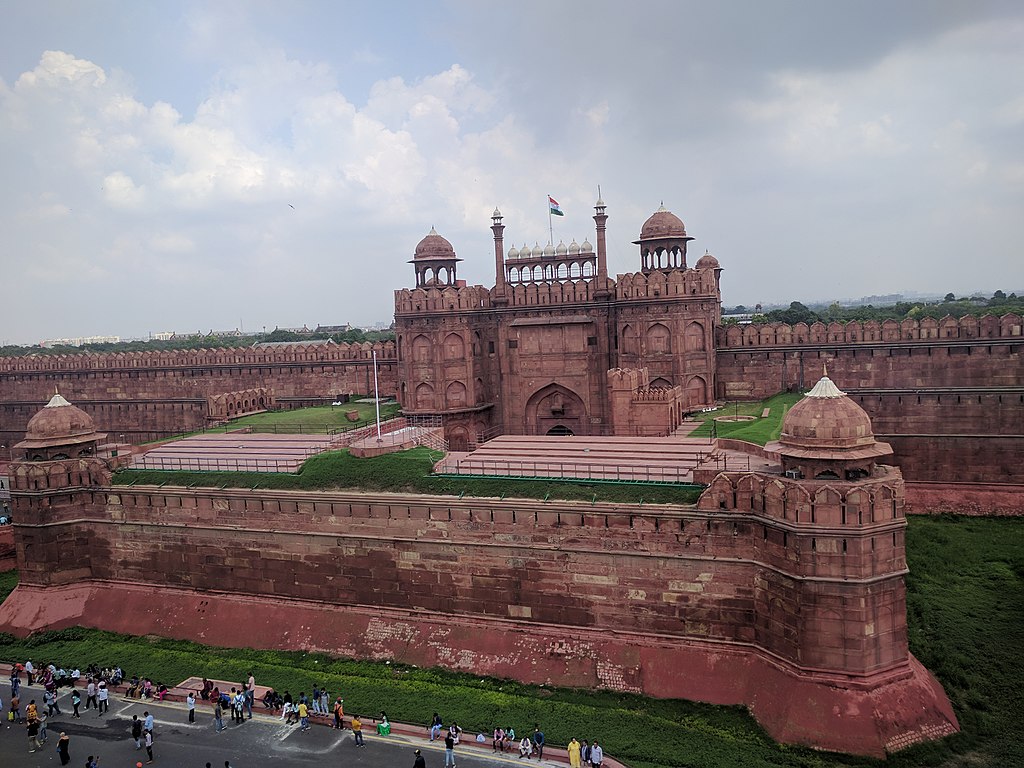
Photo by Lucky181993 from Wikimedia Commons
